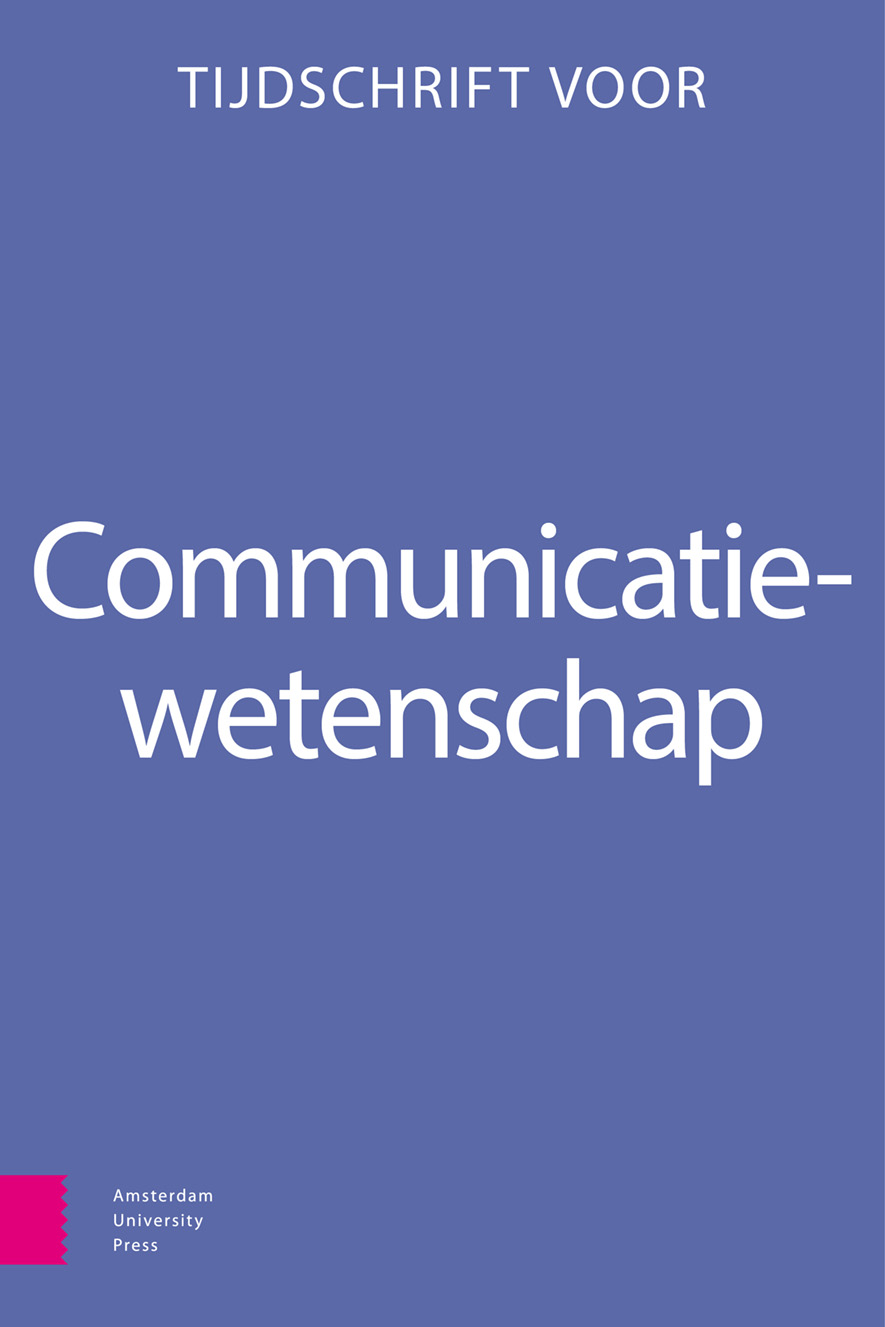- Home
- A-Z Publications
- Tijdschrift voor Communicatiewetenschap
- Previous Issues
- Volume 40, Issue 3, 2012
Tijdschrift voor Communicatiewetenschap - Volume 40, Issue 3, 2012
Volume 40, Issue 3, 2012
Language:
Dutch
-
-
oa Redactioneel
More LessIn dit nummer van het Tijdschrift voor Communicatiewetenschap vindt u vijf artikelen en twee boekbesprekingen.Het eerste artikel van Martijn Huisman, Stijn Joye en Pieter Maeseele is getiteld ‘Wie is de Ander? De representatie van Japan in het Nederlandse televisieprogramma Wie is de Mol?’. De auteurs hebben de beeldvorming over Japan, haar cultuur en haar bevolking, in het populaire Nederlandse televisieprogramm Read More
-
-
-
oa Wie is de Ander? De representatie van Japan in het Nederlandse televisieprogramma Wie is de Mol? (2010)
More LessAuthors: Martijn Huisman, Stijn Joye & Pieter MaeseeleLost in representation? A discourse analysis of Japan and the Japanese in the Dutch television show ‘Wie is de Mol?’ Lost in representation? A discourse analysis of Japan and the Japanese in the Dutch television show ‘Wie is de Mol?’ In 2010 the popular Dutch reality television show ‘Wie is de Mol?’ took ten Dutch celebrities to Japan. Applying discourse analysis, this article explores the representation of Japan and its culture Read More
-
-
-
oa Crossmediale dilemma’s. De zoektocht naar convergentie bij Nederlandse nieuwsmedia
More LessAuthors: Klaske Tameling & Marcel BroersmaThe long road to convergence and back. Convergence and crossmedia journalism at Dutch Newsmedia The long road to convergence and back. Convergence and crossmedia journalism at Dutch Newsmedia Since the end of the twentieth century, convergence and cross-media journalism are concepts that are widely used to guide the future of journalism world wide. This study analyses how Dutch media organisations aimed to Read More
-
-
-
oa Ongeschoold maakt onbemind
More LessBy Bram SpruytUneducated, unloved. A thematic content analysis on the social presentation of the low- and high educated in two Flemish newspapers Uneducated, unloved. A thematic content analysis on the social presentation of the low- and high educated in two Flemish newspapers This paper contributes to the growing body of research that documents the social representation of social groups in the media. Whereas this type of research rep Read More
-
-
-
oa Klimaatverandering als journalistieke uitdaging: een literatuurstudie
More LessClimate change as a challenge for journalism: a review of the literature Climate change as a challenge for journalism: a review of the literature This literature review synthesizes 35 years of research on climate change reporting in industrialized countries. It focuses on the production and content of climate change news. Starting from the notion of the mediatisation of politics, the study shows that news values and media logic shap Read More
-
-
-
oa Het verband tussen reclame, gezinsconflicten en teleurstelling bij kinderen
More LessAuthors: Natalie Van Hemelen, Ine Beyens & Steven EggermontThe relationships between advertising exposure, disappointment and parent-child conflicts among Flemish children The relationships between advertising exposure, disappointment and parent-child conflicts among Flemish children The current study investigates whether children’s exposure to advertising is associated with disappointment when purchase requests are denied and with parent-child conflicts. A paper-and-pencil Read More
-
-
-
oa Basisboek social media
More LessDésirée van Osch & Renée van Zijl (red.) (2011).Den Haag: Boom Lemma uitgevers.ISBN: 978-90-5931-704-8.
-
-
-
oa e-Youth: balancing between opportunities and risks
More LessBy Jos de HaanMichel Walrave, Wannes Heirman, Sara Sels, Christiane Timmermans & Heidi Vandebosch (2012).Brussel: P.I.E. Peter Lang.
-
Volumes & issues
-
Volume 53 (2025)
-
Volume 52 (2024)
-
Volume 51 (2023)
-
Volume 50 (2022)
-
Volume 49 (2021)
-
Volume 48 (2020)
-
Volume 47 (2019)
-
Volume 46 (2018)
-
Volume 45 (2017)
-
Volume 44 (2016)
-
Volume 43 (2015)
-
Volume 42 (2014)
-
Volume 41 (2013)
-
Volume 40 (2012)
-
Volume 39 (2011)
-
Volume 38 (2010)
-
Volume 37 (2009)
-
Volume 36 (2008)
-
Volume 35 (2007)
-
Volume 34 (2006)
-
Volume 33 (2005)
Most Read This Month
Article
content/journals/13846930
Journal
10
5
false
en


